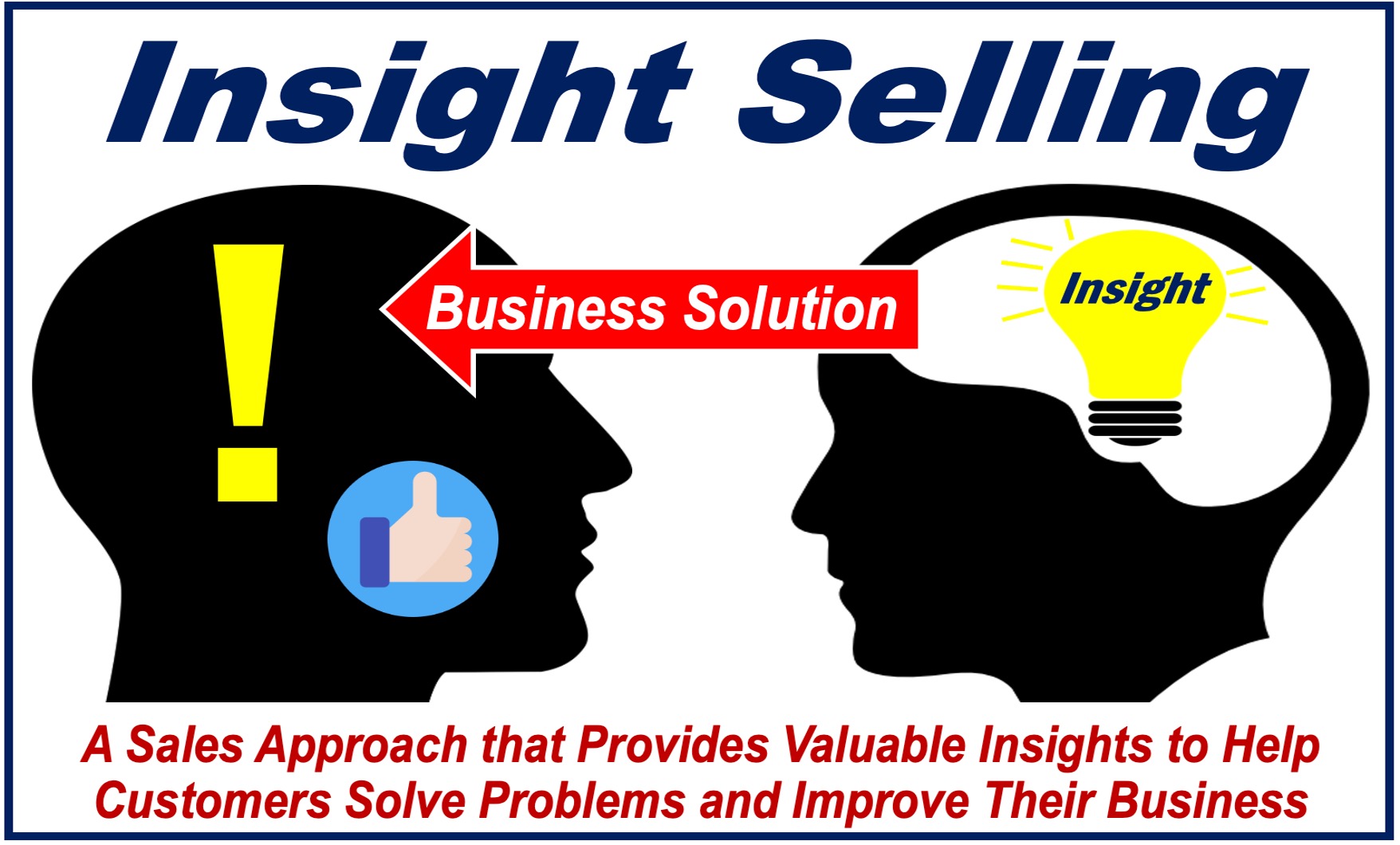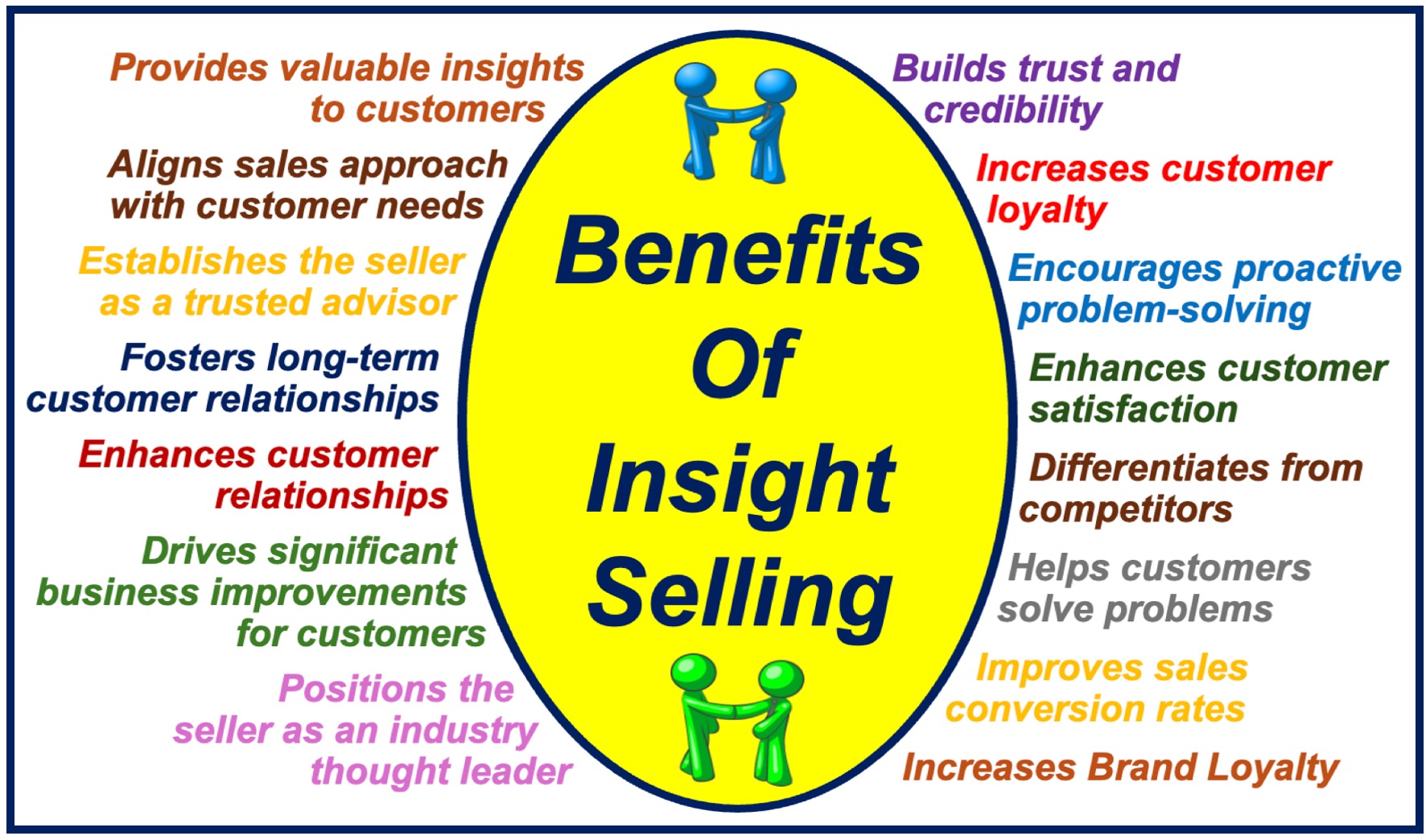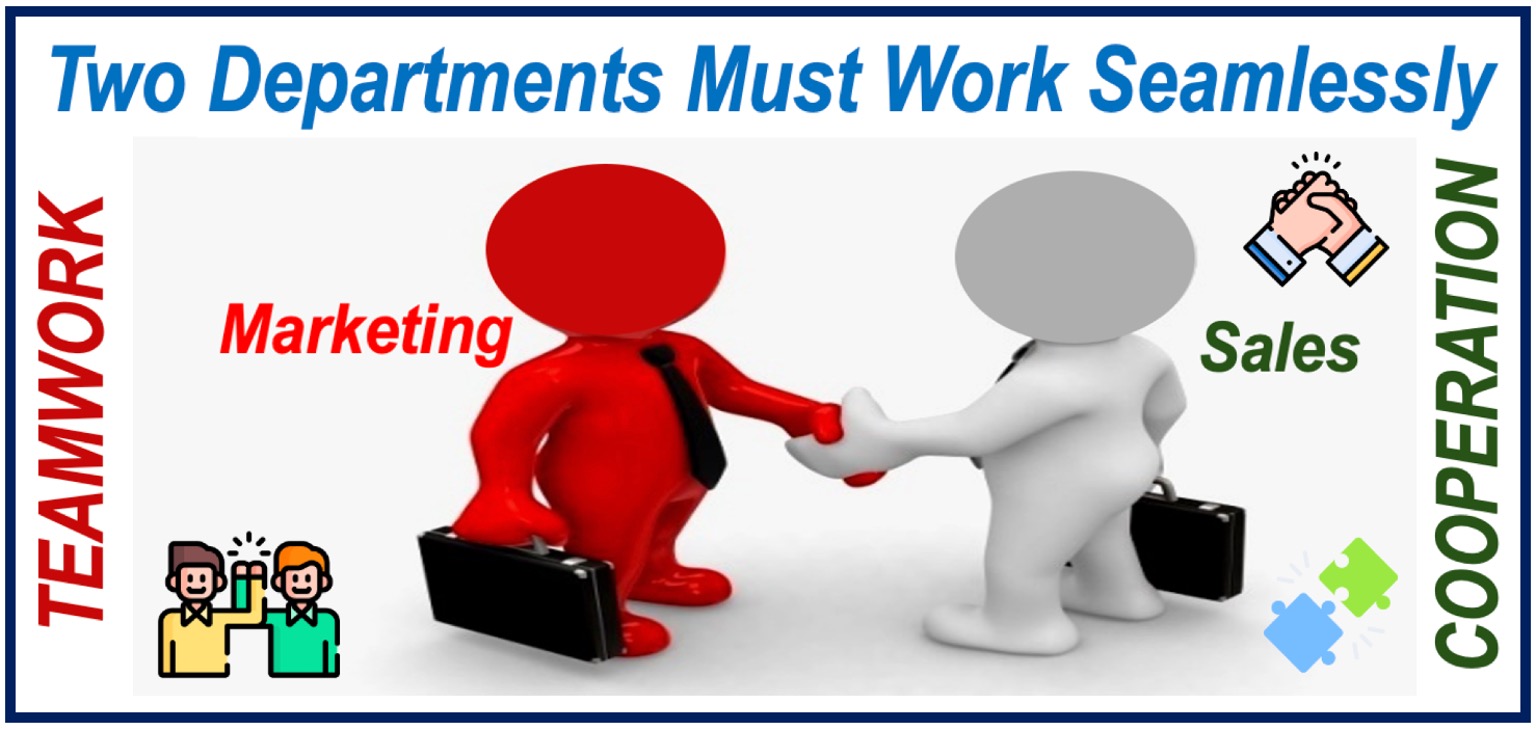When you are selling, do you prioritize providing valuable insights to your customers or prospects? If so, you practice Insight Selling – you are an Insight Seller. This method is also known as Insight-Based Selling.
In this context, the term ‘insights’ refers to helpful ideas or information that show customers new ways to solve problems or improve their business.
Unlike traditional sales methods that focus on the product or service features, as an insight seller, you focus on understanding the customer’s business challenges and offering solutions that add significant value.
You show your customer or *prospect how your product or service forms part of the solution for their business.
* A prospect is somebody who you believe could well turn into a paying customer. For the rest of the article, when you see the word “customer,” it also includes “prospect,” and vice-versa. The same applies to “product” and “service.”
CorporateVisions.com has the following definition of the term:
“Insight selling is sharing relevant and interesting information with a buyer as part of your sales process. This isn’t information about your product but should be something that will give buyers additional context as to why they need your product.”

The Core of Insight Selling
Insight selling revolves around three main components: educating, tailoring, and taking control.
Your aim is to educate your prospects with new perspectives, tailor your sales approach to the specific needs of your customer, and take control of the sales conversation to guide the buyer through the decision-making process.
-
Educating the Customer
In insight selling, your role extends beyond just presenting your product.
You need to bring new, valuable information to the table that your customer may not have considered.
This involves understanding industry trends, challenges, and opportunities, and then using this knowledge to enlighten them about potential improvements or solutions.
-
Tailoring Your Solution
Every customer has unique needs and challenges. You must customize your approach and solutions to fit these specific needs.
This might involve demonstrating how your product can solve particular problems or showing how it can integrate seamlessly into your customer’s existing processes.
-
Taking Control of the Conversation
As somebody who uses an insight selling method, you guide your customer through the buying process.
This means steering the conversation, asking probing questions, and addressing objections proactively.
Your goal is to build a narrative that helps the customer see the value in the proposed solution and feel confident in their purchase decision.
Benefits of Insight Selling

Insight selling offers many advantages compared to traditional sales methods. In the image (above) you can see 15 benefits, and three of them in more detail below:
-
Builds Trust and Credibility
By providing valuable insights and understanding you customer’s business, you can establish yourself as a trusted advisor rather than just a vendor.
This trust can lead to stronger, long-term relationships with customers.
-
Increases Customer Loyalty and Brand Loyalty
When customers see that you are genuinely interested in helping them improve their business and are not just pushing a product, they are more likely to remain loyal.
Insight selling can foster a deeper connection between you and your customer.
Brand loyalty refers to a customer’s commitment to repurchase a specific brand, while customer loyalty is a broader concept that includes repeat purchases from a company based on overall satisfaction with products, services, and customer experience.
-
Differentiates from Competitors
Insight selling can be a significant differentiator – it can help make you stand out in a crowd of competitors, especially if other companies focus on product features and price.
Implementing Insight Selling
To effectively implement insight selling, you need to invest in training and development. This includes understanding industry trends, developing strong research skills, and learning how to ask insightful questions.
You may also need to foster a culture that encourages curiosity and continuous learning among your sales staff.

Additionally, your sales and marketing teams need to collaborate closely. Marketing can provide sales with the necessary insights and content that will be valuable to potential customers.
When you all work together, you can create a strategy that positions your company as a thought leader in your customer’s industry.
Other Sales Methods
Besides Insight Selling, numerous other sales methods exist, each with distinct strategies. Here are several key approaches:
Direct Selling involves selling products directly to consumers through personal interactions and demonstrations, bypassing traditional retail environments.
Enterprise Selling targets large corporations and major organizations, requiring engagement with multiple decision-makers and managing complex, high-stakes sales processes.
Relationship Selling focuses on building long-term relationships with customers, emphasizing understanding their needs and providing personalized service to ensure ongoing satisfaction and loyalty.
Challenger Selling is about teaching, tailoring, and taking control of the sales conversation. It challenges the customer’s thinking by providing valuable insights.
Strategic Selling employs a systematic approach to complex sales, engaging multiple stakeholders, and aligning with the customer’s strategic goals. It requires careful planning and coordination.
Needs-Based Selling aligns the sales strategy with the unique requirements of the customer, offering solutions specifically tailored to their challenges.
Value Selling highlights the tangible benefits of the product or service, emphasizing its value proposition to the customer.
Solution Selling positions your product or service as the best solution to address the customer’s specific problems.
Transactional Selling aims for quick sales by focusing on product features and benefits, prioritizing fast deals over building long-term relationships.
Cross-Selling involves offering additional products or services that complement the customer’s initial purchase, enhancing overall value.
Upselling encourages customers to purchase a higher-end version of the product they are considering, increasing the sales value.
Inbound Selling, or Inbound Marketing, seeks to attract potential customers by providing valuable content and fostering connections before initiating a sales proposal.
Team Selling leverages the collective expertise of a group to handle complex sales situations, ensuring a thorough understanding of the client’s needs.
Adaptive Selling involves adjusting the sales approach based on the customer’s behavior and feedback, making the strategy more flexible and responsive.
SNAP Selling focuses on simplifying the sales process, understanding the customer’s urgency, and aligning solutions with their needs quickly and efficiently.
Digital Selling utilizes digital channels and tools to engage customers, emphasizing online interactions, social media, and digital marketing techniques.
Client-Centric Selling or Customer-Centric Selling centers around putting the client’s needs and interests first, building trust and focusing on long-term relationships and satisfaction.
Final Thoughts
Insight selling is a powerful approach in today’s complex sales environment. By focusing on educating, tailoring, and taking control, you can build stronger relationships with your customers and differentiate yourself from the competition.
As markets continue to evolve, the ability to provide meaningful insights will become increasingly important for successful sales strategies.
Video – What is Insight Selling?
This video comes from our sister YouTube channel – Marketing Business Network. It explains what “Insight Selling” is using easy-to-understand language and examples.
